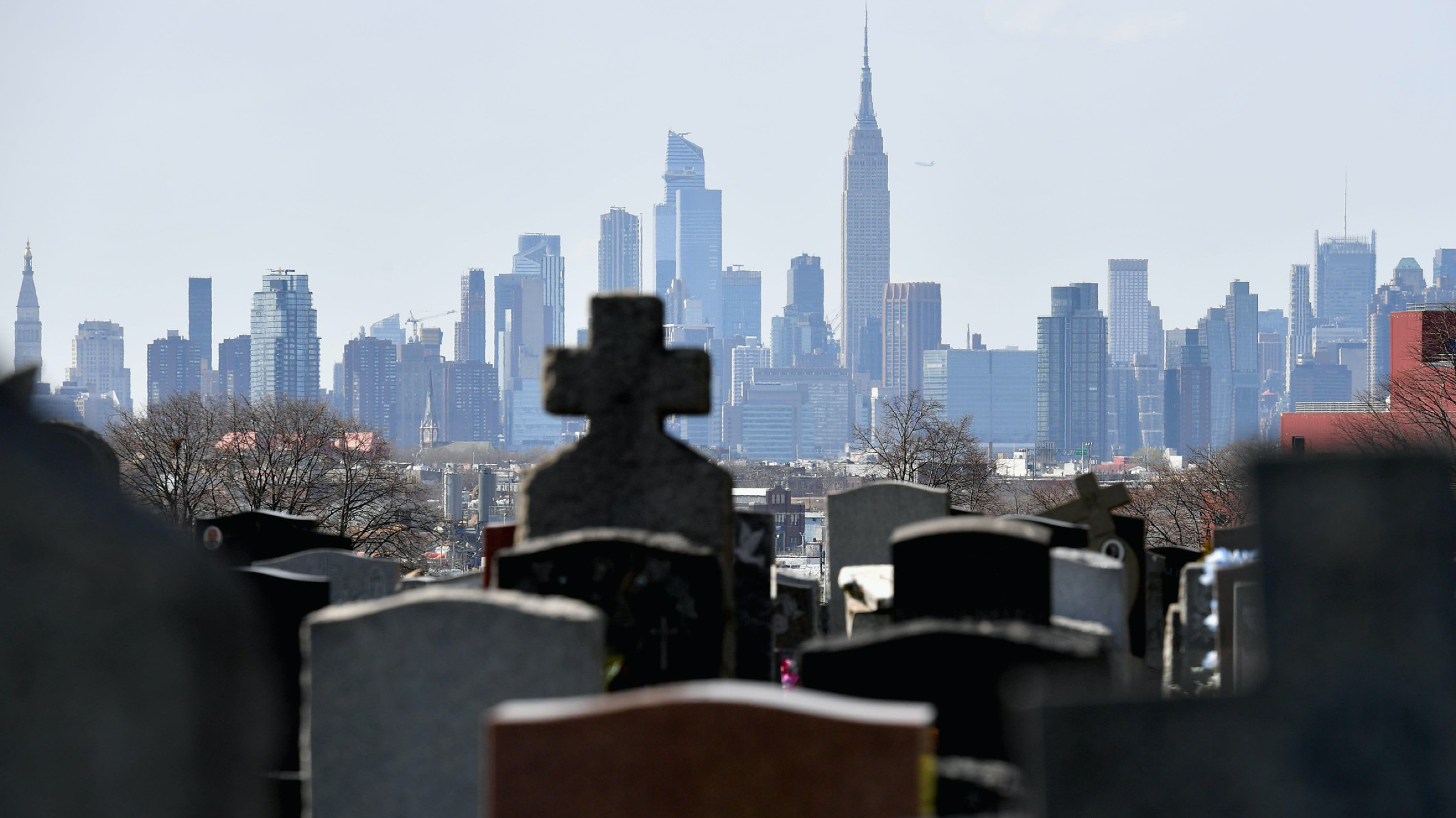As parts of the United States settle in for what may be the worst weeks of their local covid-19 outbreaks, a familiar refrain is sure to emerge.
Some people will complain that the death count attributed to the coronavirus is being exaggerated. Others, including researchers, have argued that covid-19 related deaths are actually being undercounted, as people die at home without being tested. Still others will point to the final death count and say that because it’s lower than X (whether that number be flu deaths, car accident deaths, or some other moving goalpost), then that means the efforts and sacrifices made for social distancing weren’t worth it—ignoring, of course, that social distancing was the reason the toll wasn’t much higher. Figuring out how deadly covid-19 truly is will take far more time to untangle than anyone would want, and no one’s likely to be fully satisfied with the answers we get.
As of April 10, there have been around 1.6 million reported cases of covid-19, the disease caused by the novel coronavirus worldwide. There have also been over 96,000 reported deaths, with over 16,000 deaths documented in the U.S. But these numbers are largely acknowledged as a very rough, possibly even misleading estimate of the problem, given the wide gaps in testing capacity across different countries and even within a country.
On the political right, many have taken to fostering conspiracy theories about these deaths. You don’t have to go far on social media to see people accusing doctors and health officials of fudging the numbers higher to make President Trump look bad or to (somehow) profit off the tragedy. Other conservative voices like the disgraced sex pest Bill O’Reilly are less paranoid but similarly dismissive, arguing that many of those who died “were on their last legs anyway.”
It’s true that older people and those with underlying health conditions are at greater risk of serious complications and death from covid-19. But the same can be said for almost every other leading cause of death, whether it’s cancer, heart attack, or diabetes. And just as living is hardly a simple affair, so too is dying. Sometimes you can point to a single factor that kills a person, but often it’s a mix of ailments, with a viral infection like covid-19 being the final shove.
The key point here is that epidemiologists and others who try to estimate how many people die from any given cause per year know the above very well. The flu, for instance, doesn’t usually kill in isolation either—it too disproportionately kills the elderly and otherwise already sick. Yet many of the same people who are now trying to downplay covid-19 deaths also argued that its early death toll wasn’t coming anywhere close to the typical seasonal flu’s annual tally (an argument meant to push back against the idea of doing anything too serious to mitigate the spread of the coronavirus).
That said, we’re much better at estimating how many deaths in the U.S. are flu-related because the influenza virus is a known entity. We have a decent sense of how many people are infected with the flu every year, how many people go to the doctor or are hospitalized, and how many people it helps kill, thanks to a well-established nationwide surveillance system. But that isn’t true for covid-19.
There’s steady evidence indicating that covid-19 cases nearly everywhere in the world are being undercounted. That’s partly because testing remains so haphazard and has inherent limitations. The most common type of covid-19 test right now, for instance, can only confirm an active infection, not whether you had a previous case (newer antibody tests can address that problem but have their own flaws). It’s also because the virus infects a still-unknown percentage of people without making them feel sick at all.
Many more people have had or will catch the coronavirus than any current tracking will ever indicate. These hidden cases are almost certainly less deadly on average than the known cases that wind up in hospitals, so it’s likely that the current documented fatality rate of covid-19 (over 5 percent worldwide) is an overestimate. But that doesn’t mean more people aren’t dying from covid-19 than are being reported.
In areas of China and Italy hit hard by the coronavirus, news reports have suggested a wide gulf between the official number of covid-19-related deaths in a town and what residents are seeing for themselves. In the U.S., there are still regions where testing is limited and people who may have died from covid-19 in their homes are never tested, including New York City. And there’s the simple harsh reality that we’re probably still in the very beginning of this pandemic.
Even if outbreaks start to peter out in the U.S. and elsewhere, there’s the risk that loosening our restrictions on distancing will fuel new ones. And even if the summer heat in the U.S. makes it harder for the virus to spread here, as some experts hope, a second wave in the fall and winter could certainly happen, much as it did for the last pandemic (a strain of flu) in 2009.
All of these variables will affect the final death toll from covid-19, as will how countries continue to respond to the crisis. Ironically, the steps we take to prevent new cases and deaths may be the very thing that makes people doubt they were necessary.
In late March, the White House and U.S. public health officials announced that they projected 100,000 to 200,000 deaths in the country by the pandemic’s end, provided everything was done to slow its spread. On Thursday, Anthony Fauci, director of the National Institute of Allergy and Infectious Diseases, said that newer modeling data has suggested the U.S. death toll may end up closer to 60,000, so long as we keep mitigating the outbreak. Almost immediately, some people chose to take it as evidence that mitigation efforts aren’t necessary and that the initial warnings about the virus were overblown—ignoring, again, that the reason for the downward revision in projected deaths is the success of social distancing.
There are still a lot of things we don’t know about the coronavirus, and many of the things we think we know are going to keep changing. But here’s something to remember.
By the end of the 2009 H1N1 flu pandemic, the World Health Organization reported that about 19,000 people were confirmed to have died from the virus. By 2013, several studies estimated that the true death toll was at least 10 times higher and even higher still when you took into account other causes of death indirectly worsened by the flu, like heart attacks. Knowing how deadly covid-19 will be could very well take that long to nail down too.




